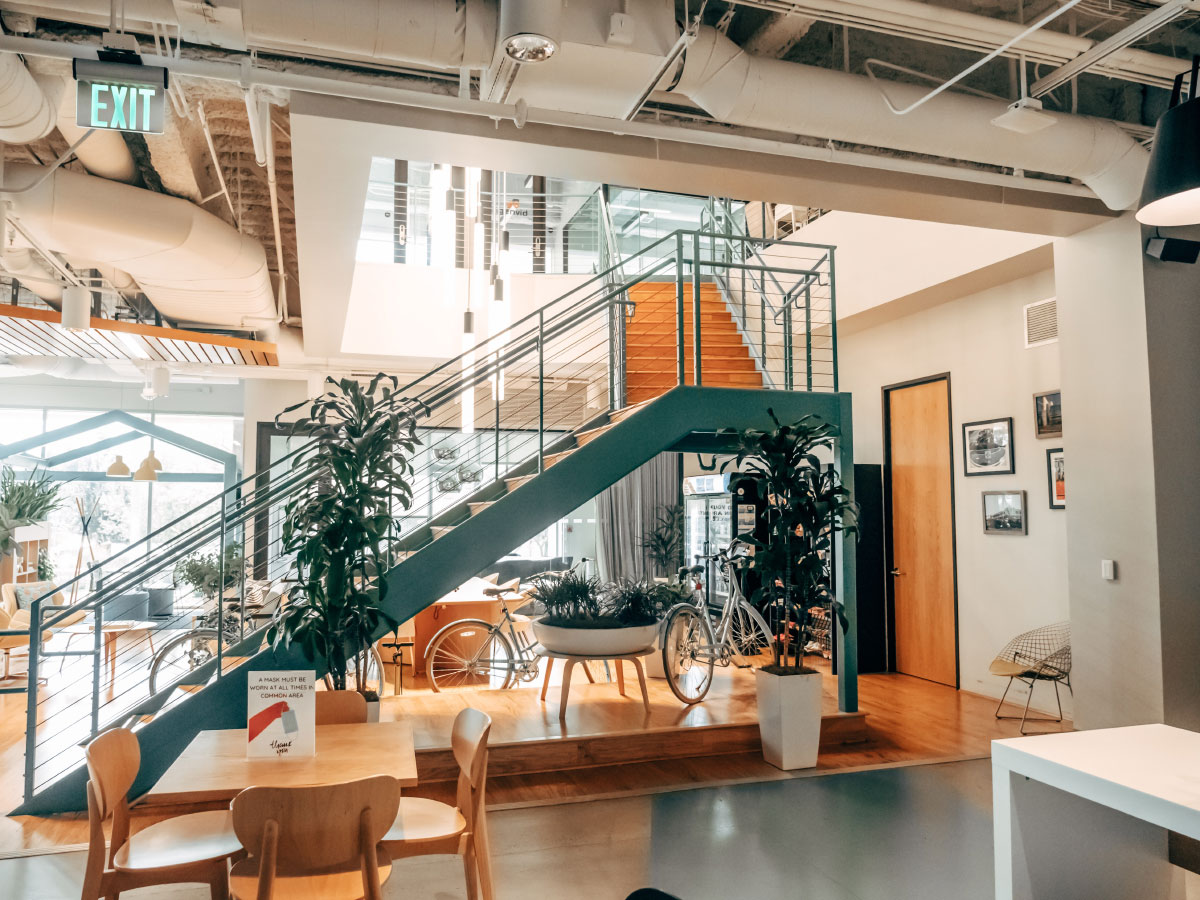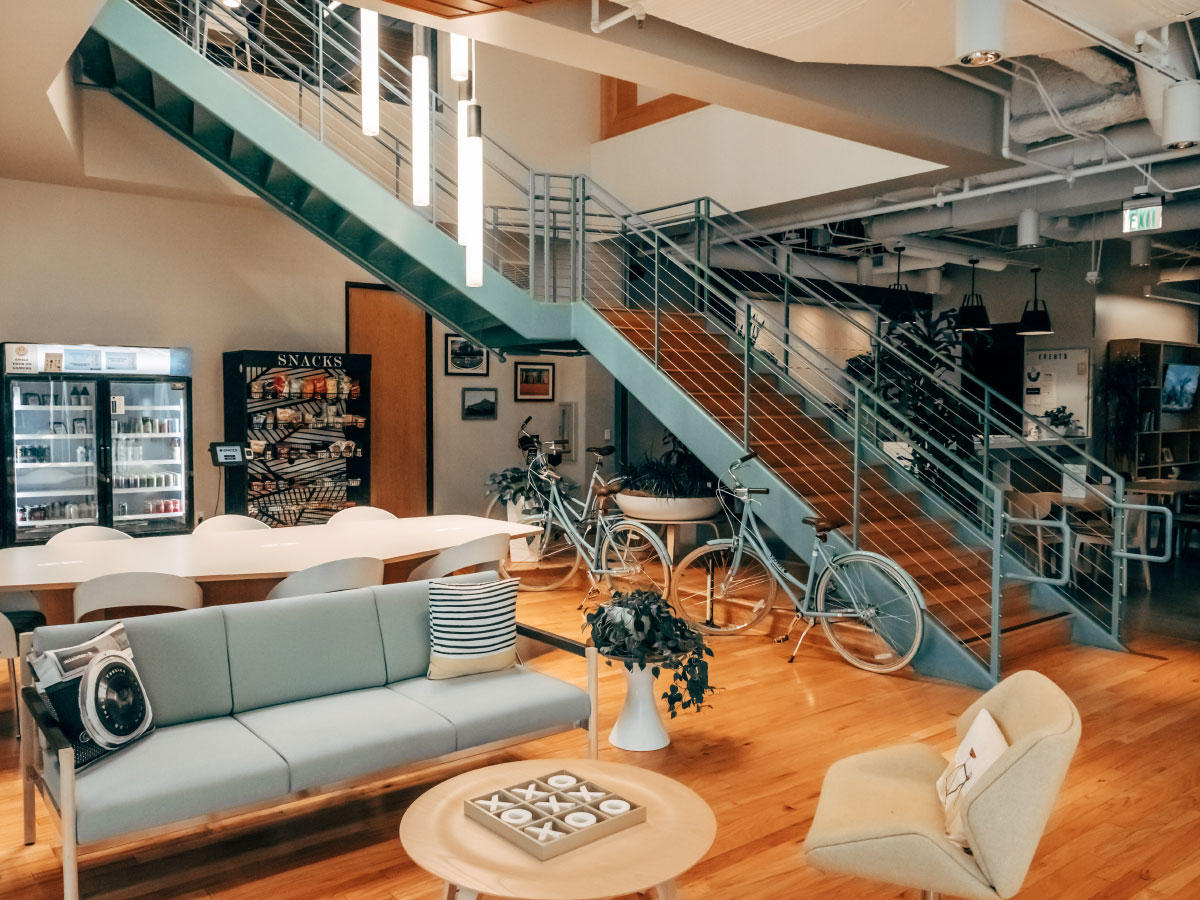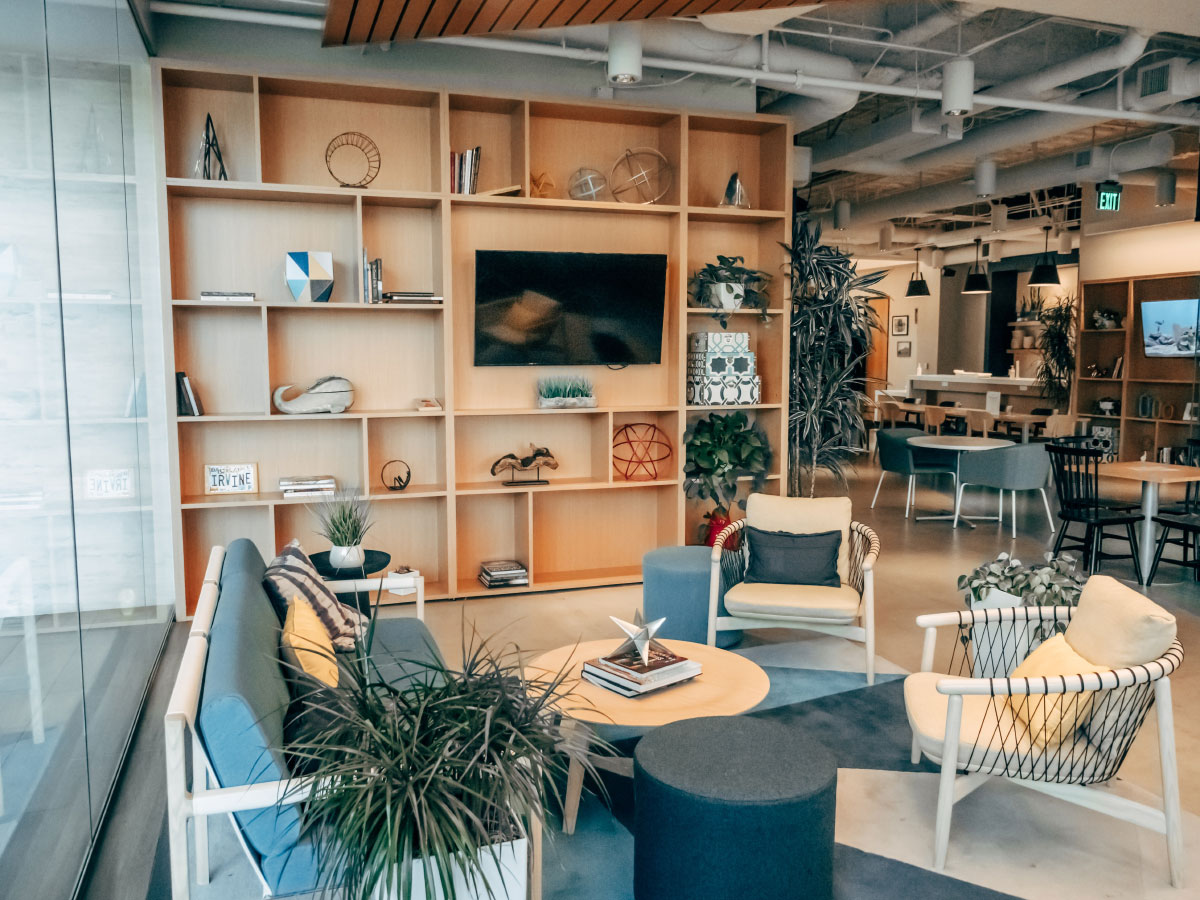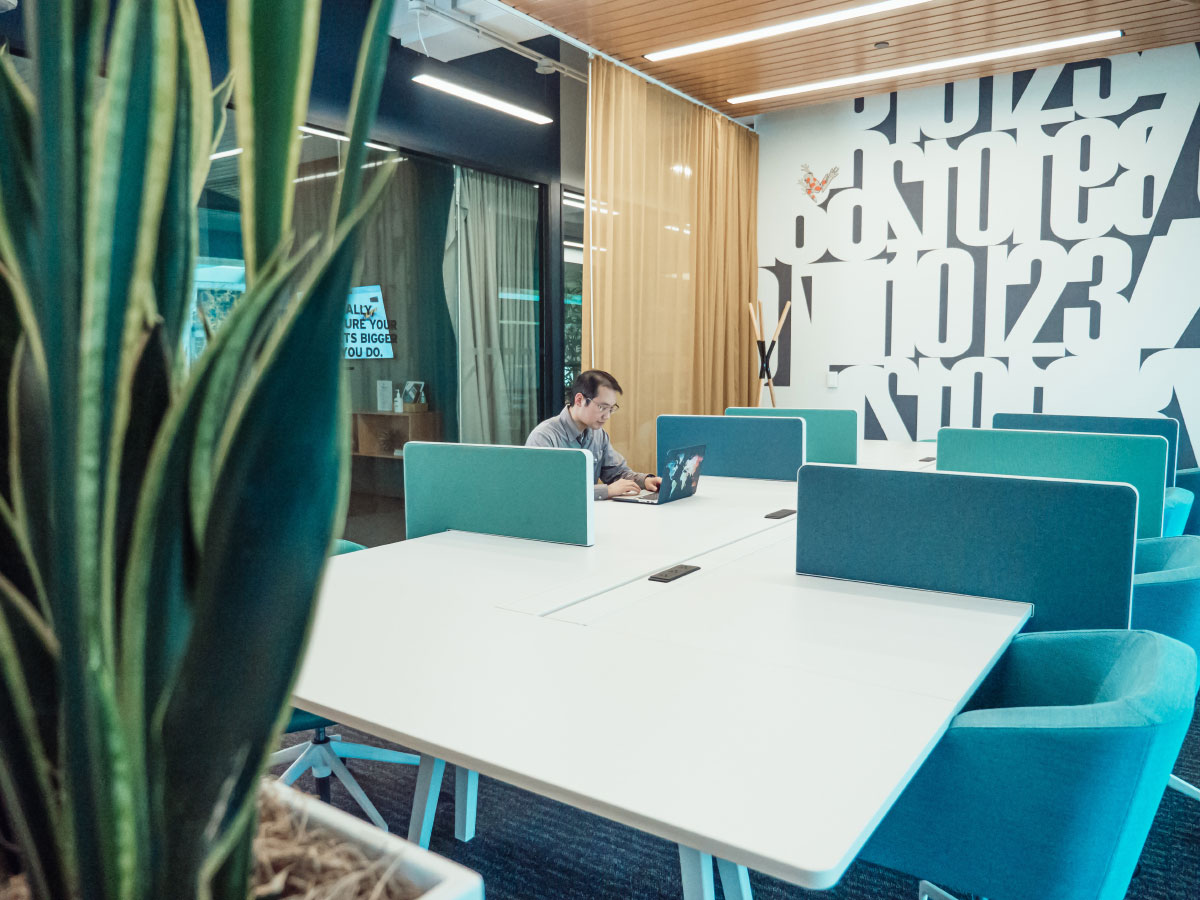Architecture determines the spaces we inhabit. Architectural design is of decisive importance in workspaces and even influences the productivity of those who use them. Let’s take a look at what aspects should be taken into account in the architecture and design of workspaces:
– Functional and ergonomic design: this is the basis for an efficient distribution of spaces and their components, as well as a layout that facilitates daily tasks. Furniture, lighting, acoustics and proportion are factors that directly affect the comfort and well-being of employees and therefore their productivity.
– Adequate lighting and ventilation are critical to creating a healthy and productive working environment. Natural light improves mood, boosts energy levels and reduces stress. Adequate ventilation also aids well-being and concentration, avoids heat and humidity, and negative feelings such as claustrophobia.

– Integrating collaborative spaces and break areas: Open spaces, inspiring meeting rooms and well-designed break areas encourage interaction, creativity and teamwork. These environments provide a stimulating environment that drives collaboration and innovation.

– The connection with nature: natural elements such as indoor gardens, courtyards or landscaped terraces have a positive impact on our mental and physical health. These spaces create a relaxing atmosphere and allow us to enjoy natural beauty and access to sunlight and fresh air.



Amusement Logic’s offices have precisely the right relationship spaces, outdoor and covered seating areas, as well as a functional and ergonomic design, so that our work becomes an exciting journey of creativity towards the creation of exceptional experiences.
By Cristina Uchán, Senior Architect in Amusement Logic’s Architecture Dept.






